Five Hard Truths of Racing—and Their Antidotes
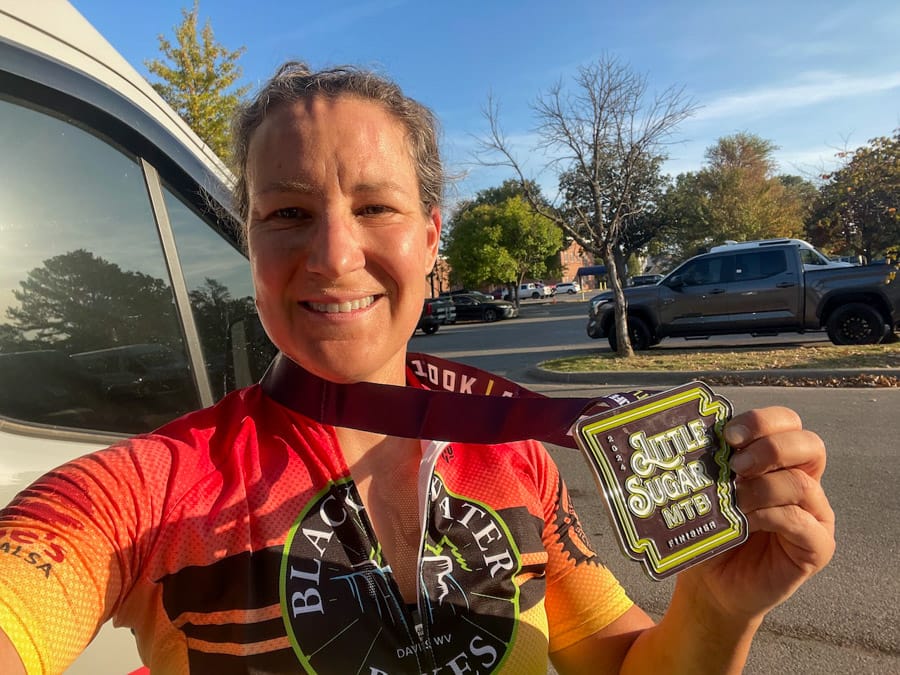
I never imagined myself a racer—quite the opposite. Racing scared me. I envisioned the pressure of people on my tail, causing me to ride faster than I should. In my mind, I built up the embarrassment of coming in last, the pain of crashing hard, and, worst of all, being unable to finish.
Guess what? It's all happened. And that's good, I figure; I've gotten all the scary scenarios out of the way.
I've also learned many powerful lessons about myself, riding, and racing. I hope to share more of those stories and why I now love racing bikes. But today, I want to focus on my experience with the harsh truths of what it means to toe the line.
Five Hard Truths of Racing
- Racing is hard.
- F.O.M.O. is strong.
- Satisfaction is elusive.
- Racing is an emotional roller coaster.
- Eventually, you'll crash. Hard.
1. Racing is Hard
"We choose to go to the moon in this decade and do the other things, not because they are easy, but because they are hard."
- John F. Kennedy
My first boss at NASA was a satellite engineer who traveled the world, from pole to pole, working on projects related to Earth-observing satellites. He was constantly told his ideas were too complicated, too expensive, and too hard. His response? "That's why we're doing it; because it's hard!"
Everyone knows the above Kennedy quote from the Rice University speech in 1962, when the race to the moon officially kicked off in the United States. But do you know what he said next?
"Because that goal will serve to organize and measure the best of our energies and skills, because that challenge is one that we are willing to accept, one we are unwilling to postpone, and one which we intend to win, and the others, too."
Little secret: I played this clip repeatedly before Leadville this year. It became a mantra of sorts, a reminder that I chose this race to push myself to new levels of self-awareness, physical fitness, and mental strength.
The training and preparation for racing, and the race itself, require intense focus and dedication to the goal. A lot of physical, emotional, and mental energy is expended on aligning body, mind, and spirit on the day. Add this up throughout a training season which bleeds directly into racing season, and it's almost impossible not to get stronger.
But it comes at a price.
The Antidote: Rest and Recovery
Strength and fitness are not built by working until we drop. They are created by periods of strain and stress on our bodies, breaking down the muscles we are trying to develop. Only when followed by sufficient rest and recovery can we heal from our work and build back stronger.
I had to learn this lesson early on, and it's not as intuitive as you might think. Our society is built around a "more is better" philosophy. As a cyclist in training, it's hard to imagine that a day or two off the bike or an easy ride will contribute to getting faster. But it does, along with proper hydration, nutrition, and the often elusive yet most potent recovery tool known to humans: quality sleep.
2. F.O.M.O. is Strong
Fear Of Missing Out. And it's more than a fear. You do miss out. Depending on your level of training, it's possible to dedicate anywhere from 5 to 15 hours a week to riding, strength training, etc. I'm talking about us mortals; the pros do much more.
However, that's just time on the bike or in the gym. Add to it all the pre- and post-training time spent: route planning, getting gear and kit together, preparing nutrition, cleaning the bike, and keeping it maintained—it goes on and on. So those 5 to 15 hours spent training quickly become 7 to 20 hours per week.
Most of us have a job, or two, or three. Many care for children and/or other family members. We also have a house to clean, a car to maintain, and bills to pay.
Something has to give. And it shouldn't be sleep!
In addition, if your training includes structured interval rides or prescribed time in certain training zones, you'll often find yourself alone on the bike. That certainly has been the case for me. I don't invite my friends to do sprint intervals on a gravel road; my guess is they wouldn't have much fun.
Committing to training has meant I often miss out on riding with my friends. Recently, a race in Bentonville, Arkansas, meant I missed out on a sweet road trip to Vermont's Kingdom Trails. In order to maintain some semblance of a sleep schedule, I don't stay out late, and my desire to avoid any upper respiratory illness that would curtail my training keeps me out of most crowds.
Let's just say I don't get out much.
The Antidote: Make Time for Social Rides
Before training, all my rides were group rides. Riding with friends was all I knew; honestly, it might be why I loved riding so much. After all, a small subset of people like smashing through the woods on two wheels, so chances are we have something in common.
These days, most of my riding is solo. During the warmer months, I do my best to make the Thursday Ride at Five hosted by our local bike shop, Blackwater Bikes. It's nice to catch up with everybody once a week, and we all enjoy some great food and camaraderie after.
In addition, I usually have one long group ride on the weekend. These are often epic gravel adventures, so they end up being great training rides with friends. Whenever I'm in a recovery week or period, I try to seek out group rides and socialize a little more. It may not be as much as I used to, but with intention, I can find a balance between monk mode and real life.
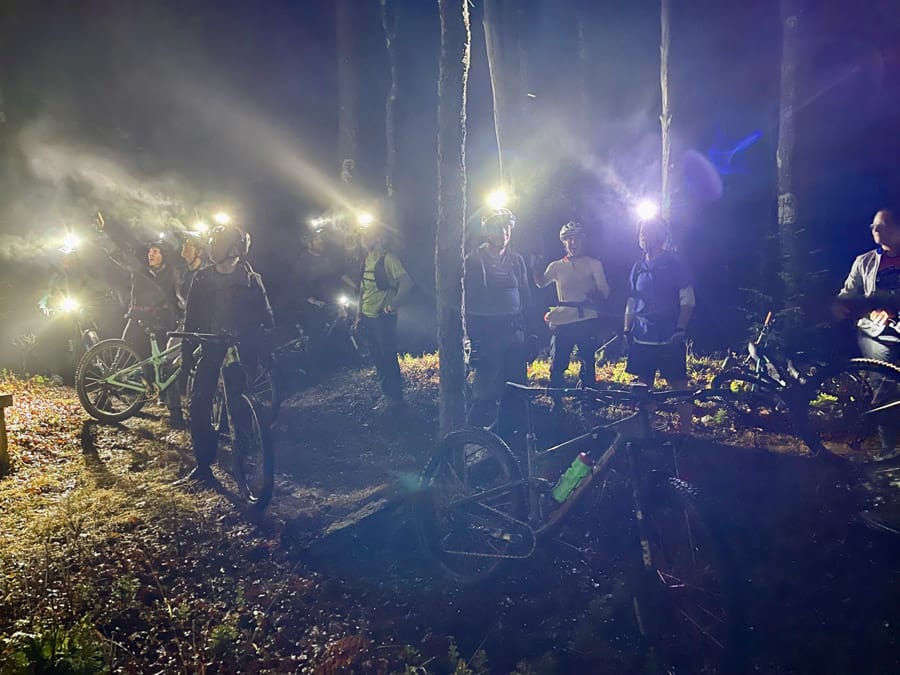
3. Satisfaction is Elusive
A "win" can take many forms. The most obvious is a spot on the podium's top step—and it's always nice when that happens. But there are plenty of other ways to win on race day. Sometimes, a win is simply finishing, meeting a specific time goal, successfully executing a new fueling strategy, or even making it to the start line.
However, post-race analysis can often dampen feelings of accomplishment. If I'm honest with myself, I can usually find plenty of mistakes and room for improvement. Be it pacing, nutrition, clothing, or bike set-up, there's always something to do better next time.
Even when all the pieces seem to fall into place for an obvious win, I always wonder: Could I have been faster?
This happened after Gravista, where I finished first in my age group and third overall in the women's race. Nine days earlier, I'd been bitten by a dog to the tune of six stitches, and I had them removed the day before the race. I wasn't ready for the 60 miles I originally signed up for but decided to show up and race the 30-mile course. I taped up my injured calf and had one of my best races of the year.
I had to manage some cramping on the final climb and crossed the finish line with a moody gut, but I was far from emptying the tank. And so I wondered: could I have been faster?
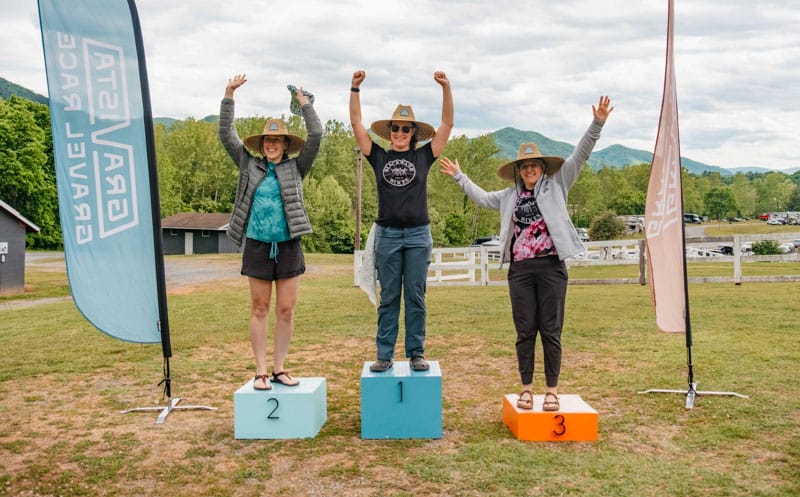
The Antidote: Perspective via Journaling
Even when we fall short of the primary goal, if we look closely enough, chances are we've moved the needle. To paraphrase President Kennedy, dedication to doing hard things organizes our energies and skills. All training and racing experience has value, regardless of the outcome. It teaches us something about ourselves every single time. And, if we look into our past, it's impossible not to see improvement.
After each race, making some notes as soon as possible is helpful. When I do this right away, I record more accurate and valuable reflections. Some prompts for your journal could be:
- What went well in this race?
- Where did I make the most progress compared to last time?
- What had the most impact on whether or not I reached my goal?
- What was the most challenging part of this event?
- What aspects of my race technique could I work on?
Mistakes are extremely powerful tools. Instead of trying to forget about our errors or numb the pain of our flaws, we can use them as weapons of transformation.
Celebrate the wins, but never waste a loss.
4. Racing is an Emotional Roller Coaster
One of my favorite aspects of racing is preparing for the race. There is so much to do! The bike needs a good clean, lube, and bolt check. I organize my clothing and electronics and make sure everything is charged. As I scarf down extra carbohydrates, I also finalize my nutrition plan, which includes pre and post-race meals. Lists are the original productivity hack, and I live by them.
Depending on the race, I often make the time to pre-ride parts of the course. For instance, while in Leadville this year, I figured out how to ride the short yet stunning singletrack section in a loop from where I was camped. I pieced together two parts of the course and got some experience for race day while seriously enjoying the ride. (I might have done this short loop three times.)
And, of course, there's the race day itself. Nervous energy, excitement, extra sugar, adrenaline, and anticipation keep me riding pretty high. Lining up at the start, the butterflies flutter away as the group rolls out. Once on course, my desire to keep up with the pack or meet my time goal pushes my pace beyond my normal limits. Top that off with citizen's cheers and support from volunteers, and most races feel like a party on a bike.
Until they don't. Until I'm alone at mile 60 of a 77-mile race, depleted of water, food, and motivation, only to discover my drop bag has already been carted back to the start. Yes, that happened this year; you can read all about it.
Or, there's the post-race blues. Depending on the magnitude of the event, they usually hit hard the following day and last a week or more. Everything I've been working toward for the last few weeks, months, or, depending on the race, years is over. Now what?
Last but not least, prepare to face setbacks. I've had illnesses, injuries, dog bites, car problems, grief, and depression all take their toll on my training schedule and race plans and threaten the spiral into darkness.
The Antidote: "This, too, shall pass."
I first began to embrace this impossibly simple statement while walking the halls of Johns Hopkins eight years ago when my late husband, Eric, first started his treatment for Leukemia. Hopkins became our second home, where we celebrated our 10th wedding anniversary, Thanksgiving, Christmas, and my 40th birthday. We weathered a tumultuous election and watched the precious seconds of our lives disappear through each drop of fluid from the IV bags.
"This too shall pass," I muttered, swallowing tears and wondering what idiot thought "I'll be Home for Christmas" was a good song to pipe through the hospital speakers.
I think of those moments, and others, during the darkest times of a race. While seemingly impossible, whatever I'm feeling—pain, discomfort, boredom, fatigue—will all pass, just as those hellish times in the hospital did.
But here's the thing about nothing lasting forever: It works both ways. I finally got this through my thick head about the same time. I learned that I'd taken for granted all the carefree times Eric and I had traveled around in our van, riding our bikes with friends, exploring new trails, camping in the stunning American wilderness, and finding great places to eat after a long day.
Now, as I fly down a speedy descent during a race, let my gaze wander to an inspiring landscape, follow my floppy-eared Labrador down the trail, or collapse on the ground, totally spent but satisfied with my effort, I try to remember: This too shall pass. Enjoy it.
In training, racing, and life, the good times come and go, as do the bad.
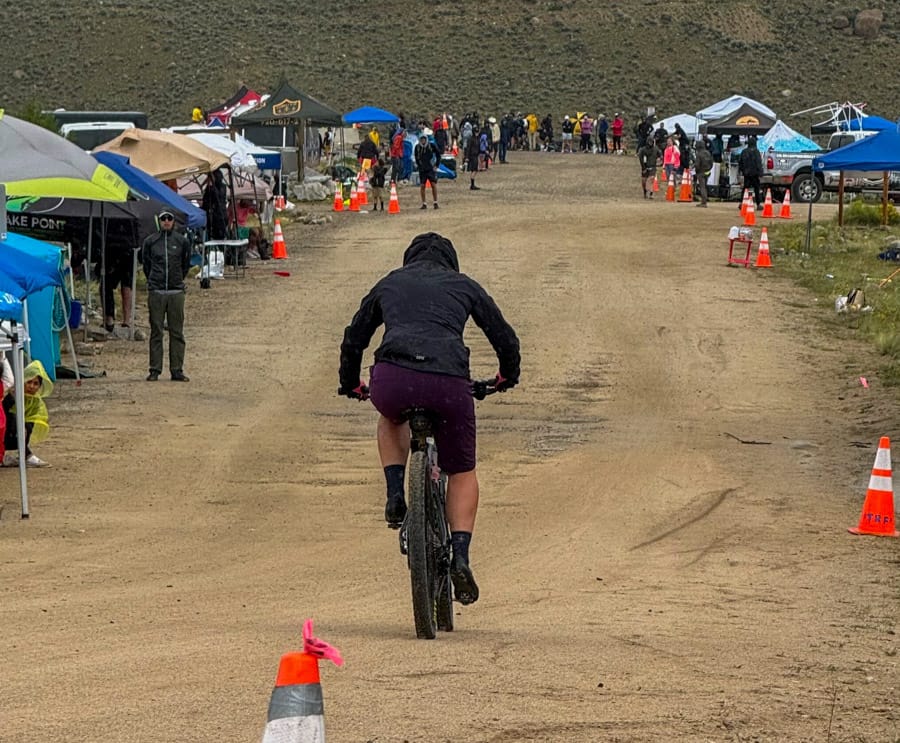
5. Eventually, You'll Crash. Hard.
My friend Stro always wishes me the best before a race: "Go fast, take chances." It seems I take that advice to heart!
There were plenty of races this year where I didn't crash, Leadville being one of them. But there were plenty where I did. Descending a steep, freshly graveled road during Rolling Coal, I fishtailed into some fist-sized rocks and fell sharply to my left, bending in my shifter and brake lever. Thankfully, I could bend it back.
During the Canaan Valley Fat race, I rocketed down my favorite hill, only to take a turn just a tad too wide and get caught in the slippery snow to the side of the trail, slamming down on my left hip. And then there's the mother of all race crashes this year, Little Sugar. I was 20-some miles in and feeling pretty confident on the switchbacks. That is, until I came into one so thick with oversized gravel rocks that finding a clean line was impossible. I braked too hard and all but launched over the bars.
The crash is not always so literal. It can come in the form of a debilitating bonk or an endless, crippling cramp. It can happen in your mind as all motivation and desire to keep going evaporate when you need them most. It can occur after the finish line of a race where everything went wrong, and you're left wondering: what's the point?
The Antidote: Keep Moving Forward
After the Little Sugar crash, I literally dusted myself off and looked for blood. There was none—thanks to my trusty knee pads. I turned my handlebars back to face the right direction, verified all levers were in place, checked my derailleur, and got back on the bike.
I could still shift, brake, pedal, and see. I was still me, out there on these incredible trails, giving it my all. The sun still shone, and the chipmunks kept me company with their cheery chirps. I realized my knee was sore only when I got off my bike at the aid station, but it was far from debilitating.
That particular race required intense focus. I had to eat, drink and modulate my temperature all while navigating tricky singletrack. I forgot about the crash pretty quickly because I was so busy doing my best to get to the finish, which I did.
It's okay to lick your wounds after the fact. Give it a day or two to wallow in the pain or annoyance of the injury. Even better, focus on recovery techniques such as stretching, foam rolling, eating well, and getting quality sleep. Treat yourself to a massage. As you consider the next race, remember how you felt at the start line of the last one: the hope, the possibilities, the faith in yourself and the work you did to get there.
Hopefully, your post-race analysis will be enlightening, and you can go into the next race stronger and more resilient, knowing that you did everything you could with the hand you had. If the crash leaves any scars, they will only remind you of your ability to endure and the healing power of time.

If you enjoyed this story and it made you go "hmmm," please forward it to a friend. For more frequent meanderings, follow me on X @vweeks and Instagram @victoria.weeks.

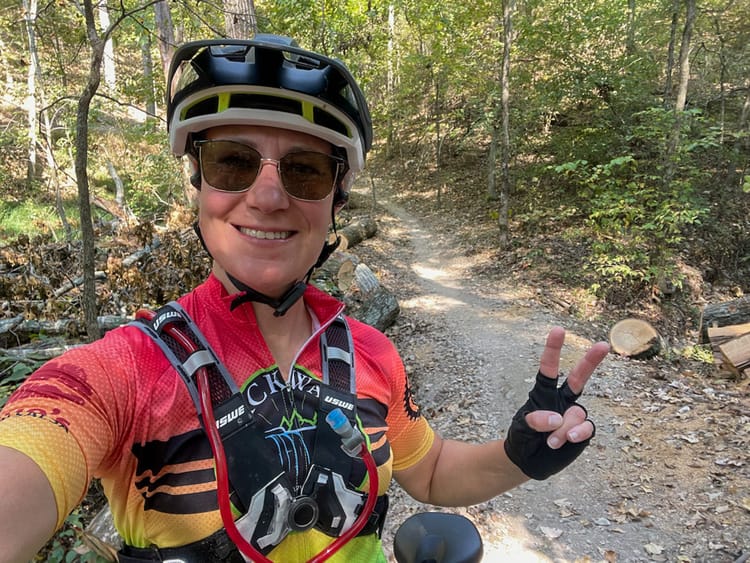
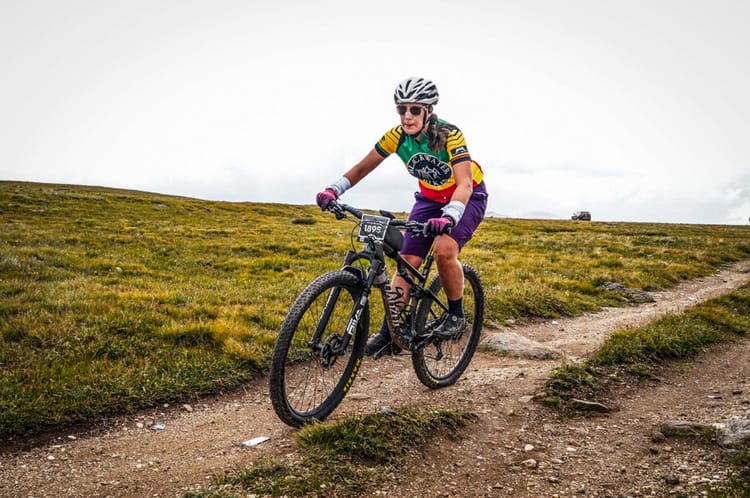
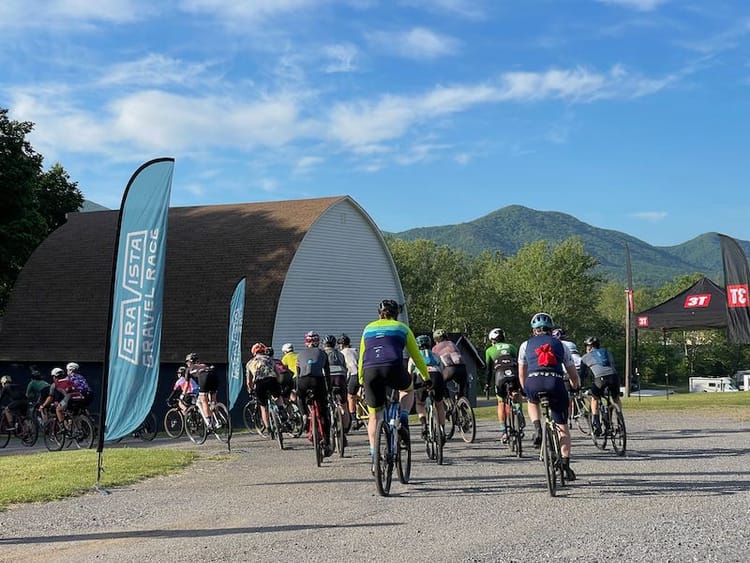
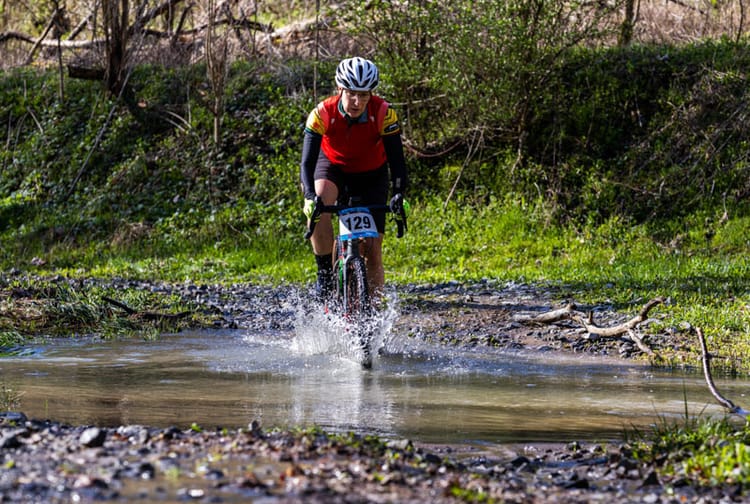
Member discussion